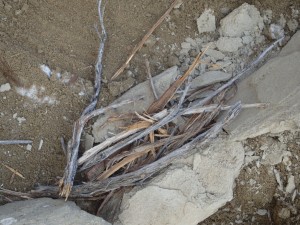How to Start a Fire
We’ve all been there- you’re down to your last match, and you want to start a fire. You strike the match, only to be left with disappointment, when the match burns out. Building a fire is not an easy task- but it’s a crucial one. Campfires bring warmth, morale, and a way to cook your meals. Whether if you are starting a fire for survival, or for entertainment, all fires are built the same basic way. Read on, if you want to know how to properly start a fire.
The first step of starting a fire is to find good quality firewood. This is relatively easy, since you’re usually in a forested area, if you are trying to start a fire. The general rule that I use is simple- gather a lot of little pieces of dry firewood, and a little of the larger pieces. You’ll have plenty of time to gradually gather more firewood once the fire is started, and you’ll conserve energy for the important part- building the fire. Remember that even if you cannot find a dry source of firewood, you can always split dry dead standing trees, and burn the insides of the trees (which will usually be dry). In a desert/dry environment, dead stems and roots of bushes can be used, in lieu of wood.
The second step of building a fire is to find dry tinder, and lots of it. Dry grass, Goat’s Beard (a type of moss, that is green, and always burns well), sticky pitch from a pine tree, and twigs are some of my personal favorite tinder materials. The trick here is to know your environment, and what burns well. Pine pitch is an excellent material in the mountains, whereas Sagebrush burns extremely well in the grasslands. As a general rule, anything that is lightweight and dry should be an excellent tinder source.
The next step of building a fire is to design the fire properly. Too often, people will just throw the materials together- this is a recipe for disaster and frustration. Instead, first grab a small pile of the lightest, fluffiest tinder that you have (grass works well here). Then, surround that pile with larger pieces of tinder (pine bark, small twigs, etc). Lastly, place small pieces of wood either on top of the stack like a teepee, or place it around the stack like a child building a cabin with Lincoln Logs. I personally like to start a campfire with a bundle of tinder, that is then covered with larger pieces. There’s no wrong way to do this, as long as the fire is designed properly, it will burn easily. The idea here is to have your tinder on the bottom of the fire, and your small logs/branches on the top of the fire. This way, the heat from burning the tinder will rise through the small logs, and ignite them in turn. Otherwise, if your tinder is on top of your logs, the fire will not start well at all (and you don’t want to waste your matches on an improperly designed fire).
Once you have your fire setup, now is the fun part- lighting your fire. You’ll want to have a clear path to bring your lighter/match down to the tinder in the bottom of the fire, so you might want to make a small hole in the fire if necessary. When you’re ready, light your match or lighter, and start the fire. If you have planned your fire well, the fire will easily burn, and you can start placing heavier logs on the fire. Just make sure not to place them too soon- the fire needs to be burning very well before heavier items are thrown on the fire. Otherwise, you run the risk of smothering your fire.
Once your fire has been started, sit back and relax for a little bit. You will still need to gather more logs for your fire (if you want it burning through the night), but you can relax for a little bit right now. After all, you’ve earned it!
